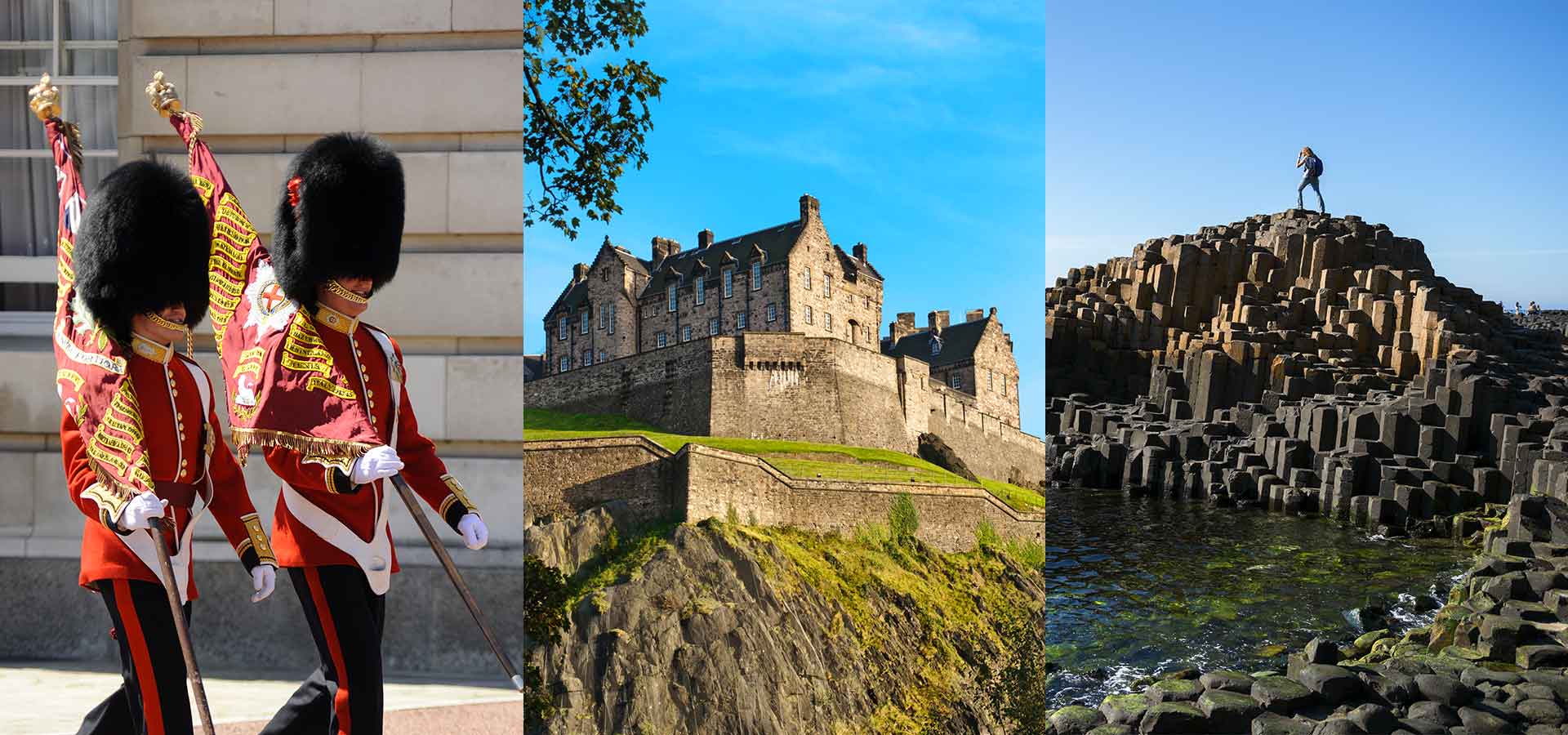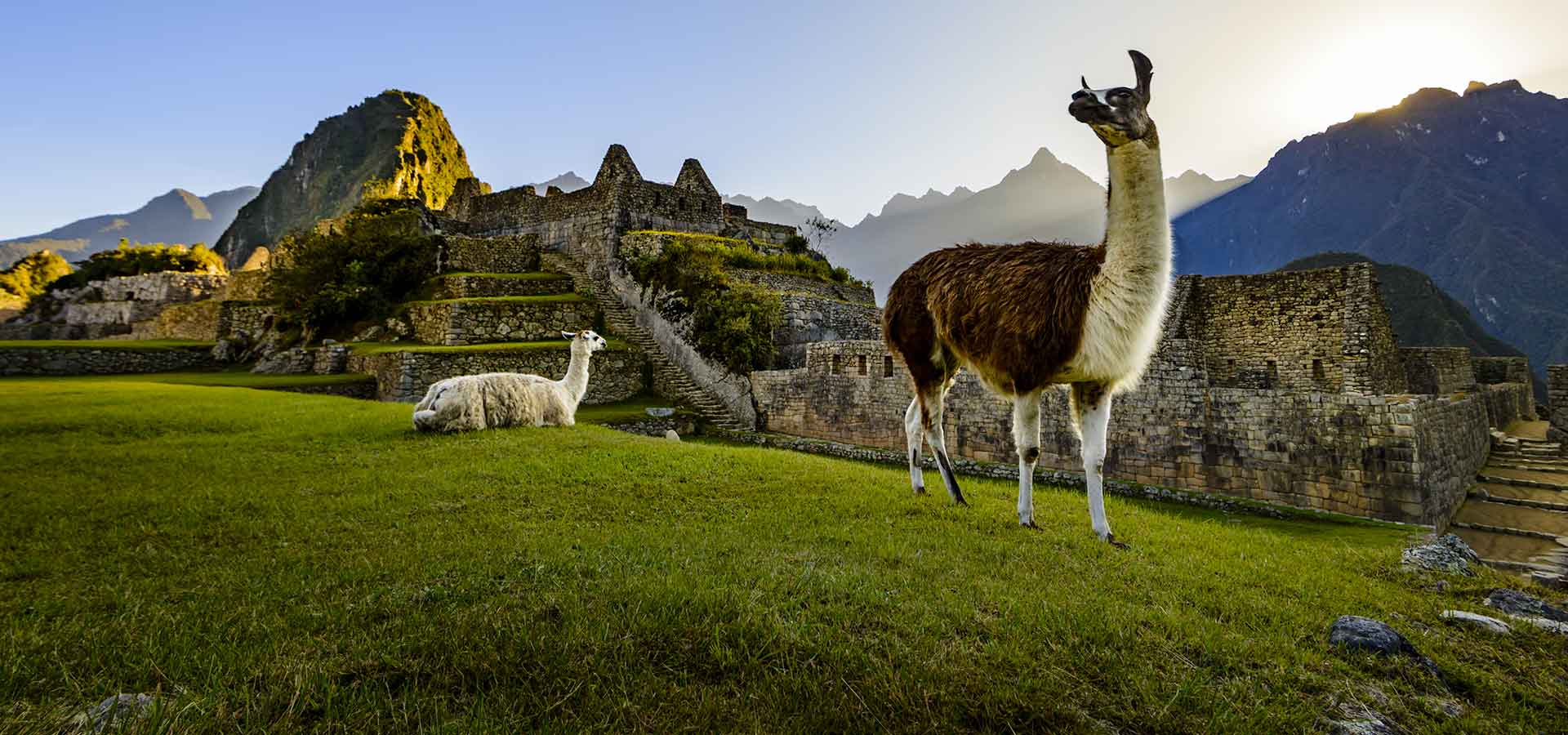Europe Discovery About a destination
With 48 locations listed as UNESCO World Heritage sites, it’s no surprise that Spain is one of the world’s most visited countries. This wonderful destination is filled with monuments whose architectural styles come from the coexisting of different cultures and religions. The Andalusia region alone is home to most of Spain’s cultural heritage, just think of its three emblematic cities: Seville, Granada and Cordoba. Up North, we can’t forget about Barcelona and its famous and impressive monuments. Without further ado, let’s head to Spain!

North of Toledo in the Castilla-La Mancha area, you’ll find 12 windmills lined up on a rocky ridge overlooking the town of Consuegra and the plain of La Mancha. This windmill string leads to the Castle of La Muela, a fortress that appears to serve a protection role. Despite being built at the end of the 16th century, some of these windmills still feature all their original machinery. When in perfect working conditions, they were previously used to grind wheat. As for the castle built in the 10th century, it has had a tumultuous past switching between Christian and Muslim domination. Its three defensive enclosures have been restored in recent decades. These traditional windmills have inspired Don Quixote’s famous battle against the giant scene, in an everlasting novel by Miguel de Cervantes.

Europe’s largest oceanarium is part of Valencia’s cultural complex called the City of Arts and Sciences. This enormous aquarium recreates the world’s main marine ecosystems. Its modernly designed buildings host thousands of specimens from hundreds of different species. Colourful fishes, corals, jellyfish, dolphins and even sharks all share a home in these massive tanks’ waters. At 70 metres long, Europe’s longest underwater tunnel offers visitors the illusion of being fully submerged in the depths of the ocean. It’s an outstanding sensory experience! The 42 million litres of water required to create this life environment are filtered using state-of-the-art technology and come from the nearby Mediterranean Sea. You’ll be excited to discover the sounds, shapes and colours of this marine life.

Built between 1761 and 1881, Seville’s Plaza de Toros is Spain’s oldest bullring and is also one of the most beautiful in the country. It can accommodate up to 13,000 bullfighting enthusiasts. When you’re in the arena, you can picture a fearless torero risking his life against a ready-to-charge bull who’s excited by the cape’s movement that serves as a bait. Bullfighting season goes from Easter to the end of September, but reaches its peak during Feria de Abril, the fair in which the world’s largest corrida takes place. A small museum recalls the history and evolution of this old tradition with posters and portraits of famous toreros in their eye-catching costumes. The bull is a very important animal in Spain and many farms are dedicated to bull raising only. Go meet these brave creatures to learn more about the ideology behind bullfighting, which is listed as part of Spain’s “intangible cultural heritage” since 2015. Olé!

Looking to visit a building that’s been under construction for over a hundred years? You’ll be able to check that off your bucket list after setting foot in this basilica whose construction has been ongoing since 1882. The end of the work was scheduled for 2026 to mark a hundred years of its designer’s death, but the date had to be postponed. The Catalan architect Antoni Gaudí (1852–1926) dedicated 43 years of his life to the building until he passed on June 10, 1926. Given its development over time, the basilica features a blend of styles going from Catalan Modernism to Art Nouveau. Spain’s most visited monument was also Gaudi’s most complex and ambitious project. He drew his inspiration from trees, ferns, seashells and fruits, and wanted his work to be “a temple of harmonious light”, which he accomplished thanks to large stained-glass windows that create a symphony of light and colours. The Sagrada Familia’s Nativity façade and crypt are among Gaudi’s seven projects listed as UNESCO World Heritage sites. Throughout the centuries, this unique structure has become the symbol of Barcelona.

The old town of Segovia is home to many monuments with great historical beauty and meaning. Muslims, Christians and Jewish have long lived together in this medieval city. The Aqueduct, the Alcazar and the 16th century gothic cathedral are all among the major monuments that were listed as UNESCO World Heritage sites in 1985. Built in the early 2nd century, the Aqueduct of Segovia is one of the Romans’ greatest work of hydraulic engineering in Spain. This massive masonry structure is 813 metres long, 28.5 metres high and made up of 120 pillars that hold 167 double-tiered arcades, all of this built without mortars. The Aqueduct was used to supply the upper part of this city with water, which was located at an altitude of 1,000 metres. You’ll be able to witness the magnificence of this monumental structure in Segovia’s main square.

This castle that looks straight out of a fairy tale is another iconic symbol of Segovia. Its elevated location is evidence of its military past. Its massive ramparts strengthened by circular towers allowed for the surveillance of the entire valley. Built in the 11th century, this fortress that’s also known as “Al Qasar” in Arabic has had many uses over time. It was originally a military shield but was also used as a prison and royal residence until the 19th century. Isabella I of Castile was crowned queen in this castle in 1474. In 1976, Charles II established the Royal Artillery College there to train Spain’s army officers. Visiting the castle’s many rooms will allow you to discover weapons, paintings and furniture from the medieval era. You’ll also have access to the terrace which offers a panoramic view of the surrounding countryside.

Located in the heart of Cordoba’s historical centre, the Mosque-Cathedral—also known as La Mezquita—is a unique landmark characterized by a mix of architectural styles that were shaped by different cultures. La Mezquita was built in 786 by the Moors on the remains of the Visigothic Church of Saint Vincent. The central part of the mosque was transformed into a Christian cathedral in 1236. Over the centuries, the Islamic and Christian architectures merged with the Greek, Roman and Byzantine influences to create a unique place. Inside, an impressive 856-column gallery, two-tone double-tiered arcades, domes and many artworks are there to remind you of the past centuries. The 93-meter-high bell tower replaced the minaret that dated back to the 10th century. What you’ll be exploring isn’t a museum, it’s a lively building serving the Christian community of Cordoba’s diocese. The Mosque-Cathedral along with the city’s historical centre are listed as UNESCO World Heritage sites.
 Located at the bottom of the Sierra Nevada mountains, the Alhambra—which means “the Red One” in Arabic—was first used as a fortress then later as a royal residence. The construction started in 1232 under the Nasrid dynasty. Today, the Alhambra is one of the most prestigious displays of the Muslim presence in Spain, which lasted for 800 years from the 8th to the 15th century. This monumental site is made up of luxurious palaces, crenellated towers and arcades-lined gardens, the Court of the Lions being one of the most beautiful ones. Don’t forget to admire the beautifully crafted decorative designs that may appear to be made from sculpted marble but are stucco. The large pools, fountains and cascades perfectly complement this unique artistic creation. After your visit, you’ll want to check out the beautiful Generalife gardens that were once used as a leisure area by sultans. These gardens and the Alhambra are both listed as UNESCO World Heritage sites since 1984.
Located at the bottom of the Sierra Nevada mountains, the Alhambra—which means “the Red One” in Arabic—was first used as a fortress then later as a royal residence. The construction started in 1232 under the Nasrid dynasty. Today, the Alhambra is one of the most prestigious displays of the Muslim presence in Spain, which lasted for 800 years from the 8th to the 15th century. This monumental site is made up of luxurious palaces, crenellated towers and arcades-lined gardens, the Court of the Lions being one of the most beautiful ones. Don’t forget to admire the beautifully crafted decorative designs that may appear to be made from sculpted marble but are stucco. The large pools, fountains and cascades perfectly complement this unique artistic creation. After your visit, you’ll want to check out the beautiful Generalife gardens that were once used as a leisure area by sultans. These gardens and the Alhambra are both listed as UNESCO World Heritage sites since 1984.

The historical centre of Palma features several Gothic or Baroque-style churches, many cute places, a few windmills as well as interior courtyards where Romans, Muslims and Christians have all left their marks. The Cathedral of Santa Maria of Palma is a true Gothic art gem. It was built on the land of an ancient mosque and its construction lasted from 1230 to the 1630s. Over the centuries, it has been expanded and restored on many occasions. The famous architect Antoni Gaudí even contributed between 1904 and 1914. He designed a huge wrought iron baldachin above the high altar, among other things. He also designed stained-glass windows, candelabras and lamps on top of adding bay windows to make it a very luminous cathedral. With 44 metres under the centre vault, the cathedral is among the highest in Europe. The Santanyi limestone that was used for its construction strikes you with its ochre, golden or pink shades that vary depending on the time of day. It was listed as an historic-artistic monument in 1931.
Beyond the obvious flamenco, paella, olive oil and tapas, Spain will know how to blow your mind and leave you with unforgettable memories!

J’ai commencé à parcourir le monde à l’âge de 16 ans dans le cadre d’un échange scolaire dans l’Ouest canadien. J’ai visité plus de 61 pays dont le Pérou à 9 reprises. Depuis mon adolescence, je me passionne pour la langue espagnole et les cultures latinoaméricaines. Le fait de parler l’espagnol me permet d’entrer en contact avec les locaux et de vivre des expériences au cœur des traditions. C’est ce que je préfère en voyage.

When we think of the UK, several things may come to mind such as royalty, the Brexit, Shakespeare, pubs, the Beatles, a sometimes not-so-nice..

Italy’s been written about so much that we sometimes feel like we’ve seen everything there is to see and that the famous boot has nothing left to..

Peru is a very diversified country that’s also rich in traditions. Whether it’s on a boat, a train, the back of a horse or a plane, some experiences..